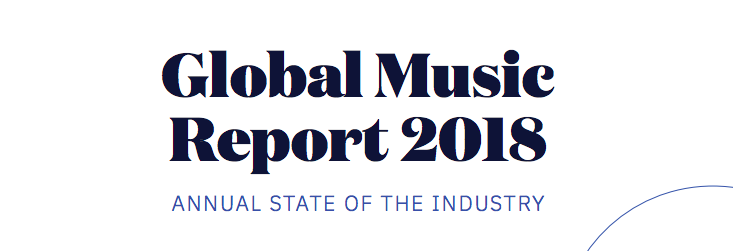IFPI released the Global Music Report 2018 and things are looking good for the music industry, worldwide. Music revenue, globally, grew for the third straight year (by 8.1%), signalling a turnaround for the music industry that has been ailing on account of piracy and falling record sales since the onset of the 21st century. Much of this growth was driven by growth in streaming revenues, which grew by 41.1%. While things are looking up for the global music industry, what does it say about the Indian music industry, in particular.

Streaming is the future in India
While streaming revenues saw impressive growth worldwide in 2017, India is clearly leading the pack. Streaming revenues in the country grew by 60.8%, which is much above the average for the Asian region (38.2%). Much of this growth can be attributed to the
burgeoning number of smartphone users in the country, together with local telecom operators running their own streaming services. The recent merger of JioMusic and Saavn is only expected to boost the sector in the near future.
But there are challenges ahead
Much of the growth in streaming revenues, globally, has been fuelled by an increase in the number of paid subscribers. Paid subscription streaming grew by 45.5%, worldwide.Converting streaming users to paid subscribers is going to be the biggest challenge, moving forward. Experts reckon that India, as a market, has been
averse to the idea of paying for music ever since the dawn of the internet age. While official numbers are hard to come by, estimates suggest that the conversion rate for music streaming in India is a measly 1%.

We could take a cue from China
China was one of the top 10 music markets in 2017, according to revenue, helped by a 35.3% growth in overall revenue (China registered a 26.5% growth in streaming revenue). Apart from a cultural shift happening in the country, China also seems to have figured out how to attract more subscribers to its streaming platforms. Xiami Music, for instance, has virtual party rooms where fans can connect over their love for music. Live streaming of interviews and performances is another avenue that Indian streaming platforms could explore. Tencent, which owns three of the largest music streaming platforms in China, hosted a live stream of Charli XCX, which attracted 1,50,000 fans. The media giant has pulled similar stunts for other artists, including Linkin Park, thus building a more engaging ecosystem for paid subscribers.

YouTube is a constant threat, too
The China growth story has also been helped by stricter copyright laws being enforced, according to Global Music Report. This is one area that India will need to address quickly if it wants to establish itself as a global player in the music industry. The biggest threat to India's (in fact, global) streaming growth comes from YouTube. Video streaming accounts for 55% of all streaming time, 46% of which is accounted by YouTube. Despite the lion's share of streaming time, video streaming's contribution to music revenue is negligible. 1,300 million users of video streaming services generated USD 856 million in 2017, globally. Compare that to 272 million users of audio streaming services, which generated USD 5,569 million in revenue.
Stream ripping is a serious threat to the potential of streaming as a revenue source for the music industry, not just in India, but globally. European nations are already lobbying for stronger copyright laws, and if India is to be taken seriously as a music market, it will have to follow suit.

Other avenues of growth
According to Global Music Report 2018, sync revenues rose by 9.6%, globally, while performance rights revenue increased by 2.3%. Performance rights, in particular, account for 14% of global revenues, which is a sizeable chunk. The Indian music industry must capitalise on these revenue sources in order to remain lucrative for artists and investors, alike. To do so, there is an urgent need to overhaul IPRS so artists' interests can be better managed. The same goes for PPL (Phonographic Performance Limited).
There is also an opportunity for sync licensing players to enter the fray. Internationally, there are players such as Songtradr that make it easy for artists to pitch their original works for sync opportunities. The time is right for an aggregator to enter the Indian market, especially with online content growing each year by way of Netflix and Amazon.
What to expect in the coming months
The Global Music Report 2018 has made it clear that streaming is where the growth lies for the music industry, for the most part. The music streaming space in India is going to be an exciting space to watch in the coming months, with major players vying for users' attention (and wallet). If the past few months are any indication, expect Indian music streaming apps to diversify their content offering to attract more users. Regional music could be a potential game-changer. However, it will be really exciting to see if any of the top 3 Indian music streaming apps follow in the footsteps of their Chinese counterparts and try to include a social aspect in their UX.





